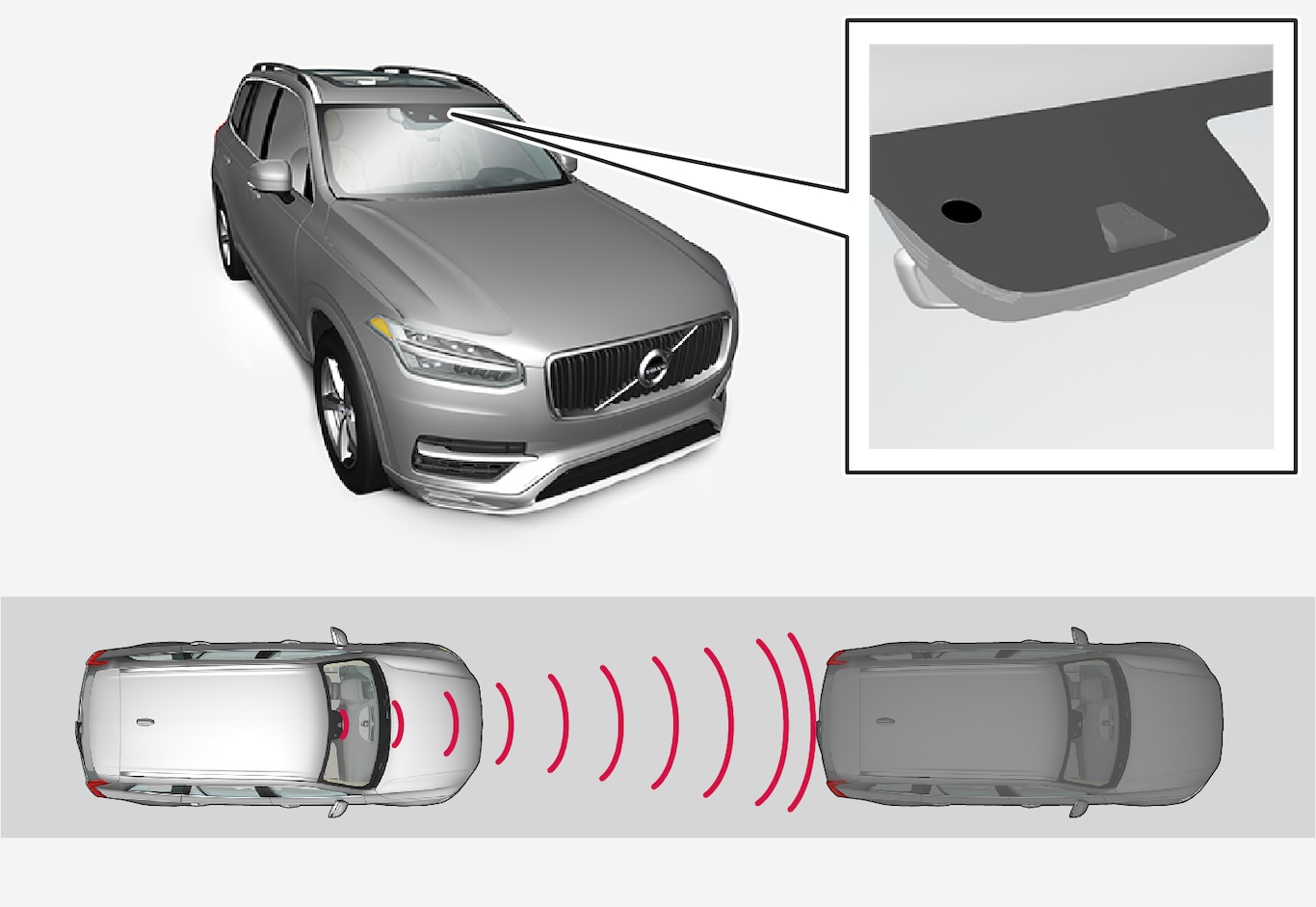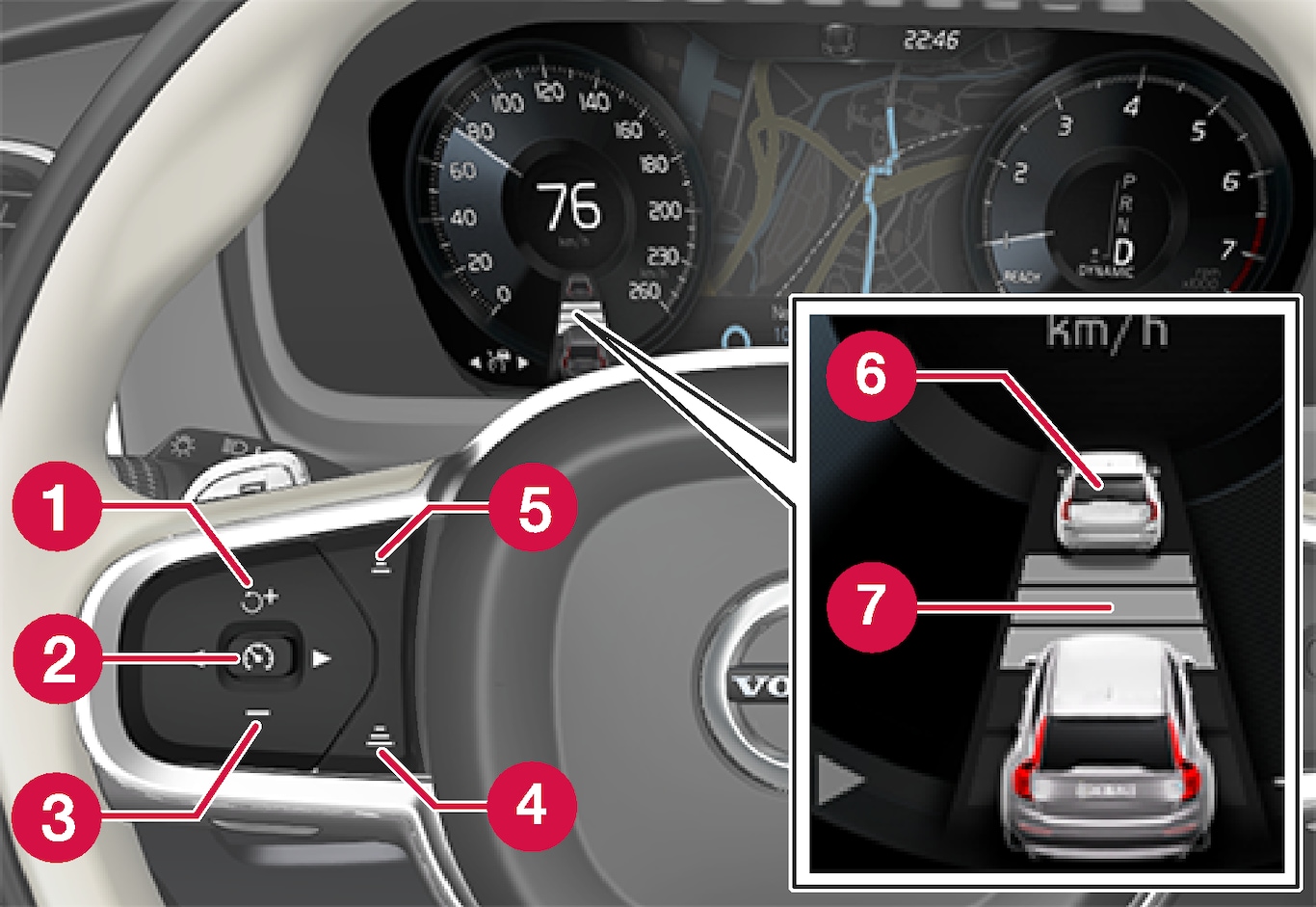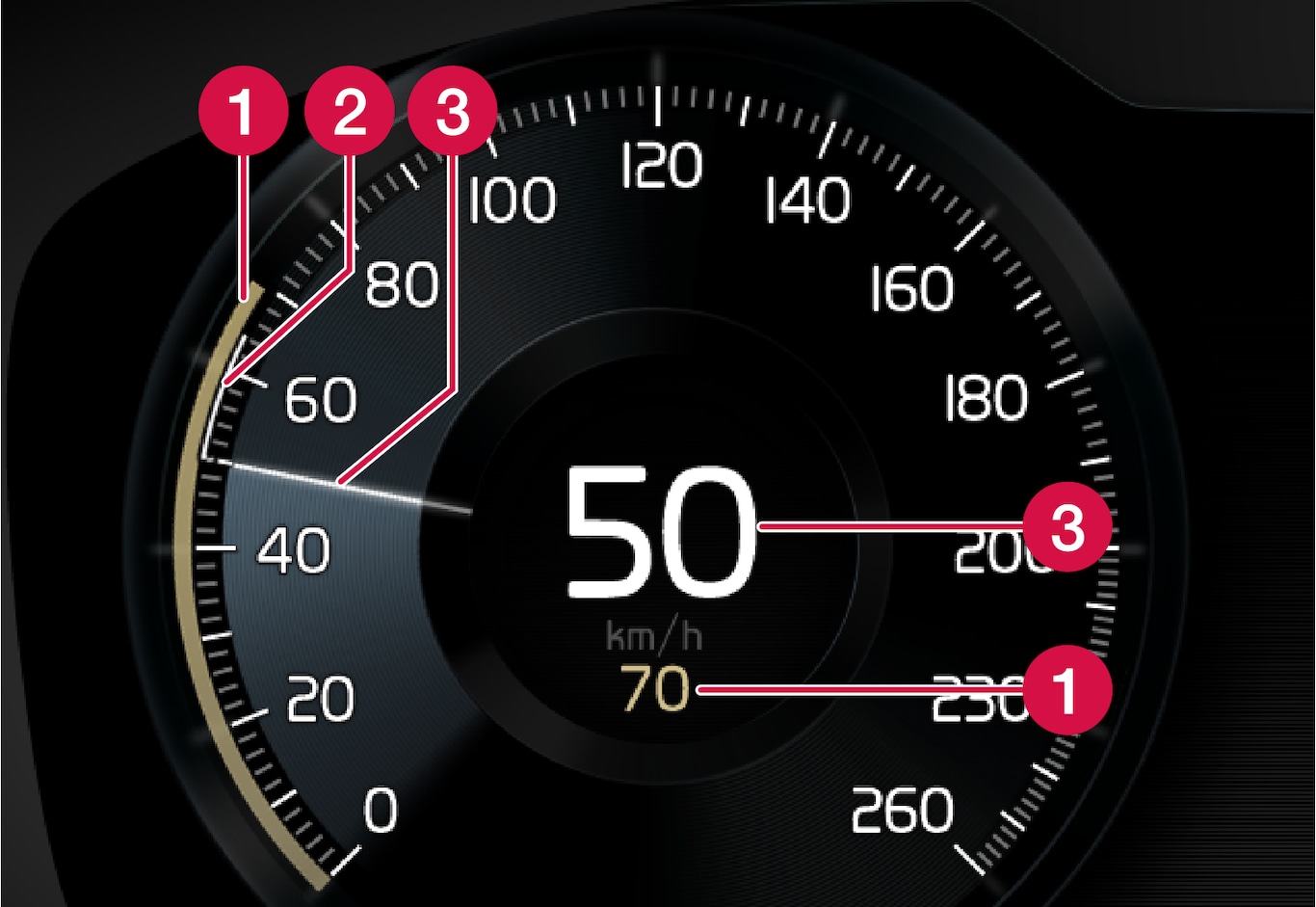Adaptive Cruise Control*
An adaptive cruise control provides a more relaxing driving experience on long journeys on motorways and long straight main roads in smooth traffic flows.

The driver selects the desired speed and a time interval to the vehicle ahead. If the camera and radar unit detects a slower vehicle in front of the car, the speed is adapted automatically via the preset time interval to the vehicle. When the road is clear again the car returns to the selected speed.
Warning
- The adaptive cruise control function is supplementary driver support intended to facilitate driving and make it safer – it cannot handle all situations in all traffic, weather and road conditions.
- The driver is advised to read all sections in the Owner's Manual that relate to this function to learn about factors such as its limitations and what the driver should be aware of before using the system (see the list of links at the end of this article).
- The adaptive cruise control is not a substitute for the driver's attention and judgement. The driver is always responsible for ensuring the car is driven in a safe manner, at the appropriate speed, with an appropriate distance to other vehicles, and in accordance with current traffic rules and regulations.
Adaptive cruise control regulates the speed with acceleration and braking. It is normal for the brakes to emit a low sound when they are being used to adjust the speed.
The adaptive cruise control aims to control the speed in a smooth way. In situations that demand sudden braking the driver must brake himself/herself. This applies in cases of large speed differences or if the vehicle in front brakes suddenly. Due to the limitations of the radar unit, braking may come unexpectedly or not at all.
The adaptive cruise control aims to follow the vehicle ahead in the same lane at a time interval set by the driver. If the radar unit cannot see any vehicle in front then the car will instead maintain the speed set and stored by the driver. This also takes place if the speed of the vehicle ahead increases and exceeds the stored speed.
- Adaptive cruise control can follow another vehicle at speed from 0 km/h up to 200 km/h (125 mph).
- The Adaptive cruise control can follow another vehicle at speeds from 30 km/h (20 mph) up to 200 km/h (125 mph).
Warning
- Adaptive cruise control is not a collision avoidance system. The driver is always responsible and must intervene if the system does not detect a vehicle ahead.
- The adaptive cruise control does not brake for humans or animals, and not for small vehicles such as bicycles and motorcycles. Nor for low trailers, oncoming, slow or stationary vehicles and objects.
- Do not use the adaptive cruise control in demanding situations, such as in city traffic, at junctions, on slippery surfaces, with a lot of water or slush on the road, in heavy rain/snow, in poor visibility, on winding roads or on slip roads.
Important
Overview
Controls

 |  : Activates the adaptive cruise control from standby mode and resumes stored speed : Activates the adaptive cruise control from standby mode and resumes stored speed |
 |  : Increases the stored speed : Increases the stored speed |
 |  : From standby mode - activates the adaptive cruise control and stores current speed : From standby mode - activates the adaptive cruise control and stores current speed |
 |  : From active mode - deactivates/changes the adaptive cruise control to standby mode : From active mode - deactivates/changes the adaptive cruise control to standby mode |
 |  : Reduces stored speed : Reduces stored speed |
 | Increases the time interval to vehicles ahead |
 | Reduces the time interval to vehicles ahead |
 | Target vehicle indicator: ACC has detected and is following a target vehicle at the preset time interval |
 | Symbol for time interval to vehicles ahead |
Note
Driver display

 Stored speed
Stored speed Speed of vehicle ahead.
Speed of vehicle ahead. Current speed of your car.
Current speed of your car.
To see different combinations of symbols depending on traffic situation - see the heading "Symbols and messages for the adaptive cruise control".